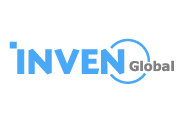
Photo via IEM Extreme masters
For FaZe Clan, it was a cool million on the line in Germany – alas, they only made it to the semi-finals of ESL One Cologne, one of the premiere CS:GO events on the calendar. This outstanding opportunity was due to a major marketing initiative by Intel. The winner of four out of ten ESL/DreamHack-branded events gets rewarded by this extra prize for completing a “grand slam”. From the organizers’ and sponsors’ perspective, the concept is perhaps the most brilliant promotional ploy we’ve seen in the CS:GO scene so far. It single-handedly creates context and an overarching narrative for the corresponding events over the year and is purposefully engineered to fuel rivalries thanks to a “spoiler” reward.
As many high-profile LAN events pile up and Valve’s majors losing a bit of their shine over the course of the last twelve months, it is becoming quite important for third-party tournament organizers to stand out from the crowd. Even if it could use further improvements, it is a great byproduct of the ESL-Intel grand bargain.
This isn’t Wimbledon
The Inter Grand Slam creates a separate prize of $1 000 000 awarded directly to the players of the first team to win four out of ten ESL or Dreamhack branded event with prize pools of at least $200,000. It was announced last June as part of ESL and Intel’s technology deal, and it’s 2018 iteration marked the first time a team could have picked up the massive pile of money that’s been dangled in front of their faces for over a year now. FaZe Clan’s wins at ESL One New York last year plus IEM Sydney and Belo Horizonte in recent months have put the team in pole position to win the first “season” of this overarching race.
"It is the first large-scale marketing move that directly values long-term excellence"
Had they lost in the final, the winners would have been awarded $100 000 for playing spoiler. all in all, the system provides a tangible reward for a consistently high performance and provides a specific incentive for other teams to stop them for a bit of extra reward for themselves, increasing the stakes even further.
From a fan perspective, it is the first large-scale marketing move that directly values long-term excellence, creating recognition for the dominant teams similar to the purpose of the Golden Mouse in Starcraft: Brood War. The Grand Slam also provides an incentive to keep up with the circuit beyond a single event and greatly helps the creation of storylines, especially when it comes to determining an “era” of dominance by an individual team. It comes exactly at the right time for ESL too, as the competition between tournament organizers is heating up just as much as the premiere CS:GO teams’ have done recently as they try to fill the void created by the changes in the Valve-sponsored majors.
Upset wins and a gaping wound
The creators of CS:GO took a step back in more ways than one in terms of their involvement in the pinnacle of the esport scene. Not only did they decide to stick with only two of such majors throughout the year, the recent format changes made them less about Counter-Strike’s greatest teams and players, becoming more like the FIFA World Cup instead. This is especially jarring if you consider the differences between the prize pools of a CS:GO major ($1 million) and The International (close to $20 million in 2018), not to mention the format differences that make Dota 2’s event a much better barometer of skill thanks to fewer direct invites and a more exhaustive group stage.

Photo provided by ELEAGUE
The new system emphasizes an equal presence for all regions in the qualifiers regardless of the depth of their respective scenes. Just to put things in a numerical perspective, 1244 teams attended the European open qualifiers, a combined 357 gave it a shot in the Americas, 735 CIS teams did the same and 244 went for the Asia minor: despite this the invitations only took the last major’s performance into account. The latter means that the list of participants often feel like a snapshot frozen in time, marred even further by the occasional upsets encouraged by the string of best-of-ones in the recently introduced Swiss group stage format.
Nowadays, if you want to find the best team in Counter-Strike, you are obligated to look elsewhere than the majors – making it even more important to stand out from the crowd if you’re a tournament organizer.
Good, but could be better
Based on the above, it’s clear that the Intel Grand Slam is mainly aimed at the fans, even if the prize directly goes to the players. As incredible as this may sound, this isn’t a whole lot of money for a CS:GO pro on the highest rungs of the game. As preposterous as this may seem, the Intel Grand Slam already wasn’t effective enough by itself for the big teams to prioritize the ESL/DreamHack-branded events in the current crowded space: June’s car crash of a LAN schedule saw Astralis skip Belo Horizonte in favor of the ECS finals and chose the Blast Pro Series’ Istanbul edition instead of ESL’s upcoming New York event (though it’s worth mentioning that they have five other events to pick up two more wins). We’ve reached a point by 2018 where one million dollars is still a nice figure to excite viewers and Dr. Evil but is no longer really a large enough sum to change the gravity of the wider CS:GO LAN landscape.
Just like how the prize pool could use a bit of an increase, it’s also very likely that the later “seasons” of the Intel Grand Slam will feature a slightly different format. While the current iteration does succeed at rewarding consistency, there is no guarantee for a photo finish. Playing “spoiler” also won’t come into play often enough – not only is the “spoiled” team required to be on three out of four wins, they need to make it to the final of the event and then lose out to their opponents.
"Nowadays, if you want to find the best team in Counter-Strike, you are obligated to look elsewhere than the majors"
It would perhaps be more relevant if teams were rewarded for eliminating the first-placed team in the standings, regardless of how close they are to completing the Grand Slam or when they go out – of course, that may very well add up to another million dollars in payouts, so it may not be the ideal way to go about such a change.
In any case, the Intel Grand Slam creates long-term context and event-specific rivalries for an otherwise unconnected series of tournaments without any added organizational or logistical hassle, making it a very creative move by the ESL-Intel partnership. It is fairly likely that other non-league tournament organizers will also follow suit in some form in the future. The current version may not be that enticing for the top-level teams, but it has created some extra buzz around the event in the cathedral of Counter-Strike, which, if you look at its cumulative effect for the upcoming events, may be worth the million-dollar price tag by itself.
Sort by:
Comments :1
-
0

level 1 Game_Fans
But u4gm fifa coins team know that creating a player doesn't only consist of making sure they 'look right', and that you have been requesting new positions for your Virtual Pros to play in to give you more control of the way you develop your game on the pitch.






